New regional and international coalitions are forming with respect to the Middle East and Persian Gulf. An alliance of Donald Trump-led America, Israel, Saudi Arabia, and the United Arab Emirates faces a new coalition of Iran, Russia, Iraq, Bashar Al-Assad controlled-Syria, Hezbollah and grassroots regional forces such as the Popular Mobilization Forces in Iraq and the Syrian Defense Forces. The geopolitical competition between these opposing sides can more specifically be described as between the regional states seeking US security guarantees and the creation and consolidation of a US-led regional security order, and those states—such as Iran, Russia, and Syria—who despite their interests not wholly aligning on all fronts, have the overlapping strategic aim of fostering a multipolar regional order where they each have greater autonomy.
The Persian Gulf is consequently among the most significant geopolitical theaters in the world and will decide the fate of the global order. The chief rivalry in the region—between Saudi Arabia and Iran—is in fact a proxy for the competition between states seeking multipolarity (Iran) and those seeking to bandwagon off continued US regional and global hegemony (Saudi Arabia).
The regional powers of Iran, Saudi Arabia, Turkey, Egypt, and Israel and two global powers of Russia and the United States are the two consequential regional and international set of actors deciding the region’s fate. More specifically, the rivalry between Saudi Arabia and Iran is among the most significant factors affecting the future of the Middle East, especially the Persian Gulf.
A Changing Power Alignment
Changing political and economic realities have forced the United States to be more active outside of the Middle East and Persian Gulf. This has opened a new space for diplomatic transitions and transformations across the Middle East and North Africa (MENA) region in which the Iran–Saudi divide appears to be the primary conflict.
After decades of importing fossil fuels, the United States is now positioned to be a leading global exporter of hydrocarbons. The biggest economic challenge to US global dominance is China and, more lately, India. Both of these countries comprise nearly 40 percent of the global population and have the highest rates of economic growth. China, for example, is already the world’s largest economy by purchasing power parity. Meanwhile, Russia under Vladimir Putin has regained its position as a global power and is establishing strategic relations with rising powers across the world, including Beijing and Delhi. The United States thus has no choice but to balance increasing Chinese dominance in the Pacific.
Given Iran’s expanding regional influence, the foremost concern of Israel, Saudi Arabia, and some other regional Arab states is that as the United States disengages from the Middle East and Persian Gulf, the subsequent vacuum is not filled by Iran and Iran’s allied powers. This worry is amplified by the fact that the Arab World as a whole is in decline and traditional Arab powers have either collapsed or are stricken with domestic crises.
In light of these circumstances, Riyadh’s foreign policy in the region can be summarized in three points. The first point is to keep US military, security, political, and economic dominance over the region, especially in the Persian Gulf. The second is to ally with Israel to gain the support of the powerful international Zionist movement. The third is to confront Iran and its regional allies such as Syria, Iraq, Hezbollah and popular forces such as Al-Hashd Al- Shabi (Popular Mobilization Forces) on all fronts.
In response, Iran’s strategy works to resist US hegemony and improve Iran’s relations with other global powers. Resisting Israel and supporting Hamas and Hezbollah and the Houthis in Yemen are mainstays of the Iranian foreign policy. Iran furthermore seeks all-out confrontations with takfiri terrorist groups, whose root ideology is Wahhabi Salafism, such as Al-Qaeda, Jabhat Al-Nusra, the Islamic State in Iraq and Syria (ISIL), and so on. Finally, Iran hopes to act as a counterbalance to Saudi efforts to impose hegemony over the smaller Arab Persian Gulf sheikhdoms.
The Rift Writ Large
Today, the Saudi–Iran diplomatic feud affects regional developments across the Middle East and North Africa. Here are some of the most important places where the Saudi–Iran divide is felt.
Iraq and Syria
Iran played a decisive role in halting ISIL’s expansion in 2014 and preventing two Arab countries, Iraq and Syria, from falling under its dominance. Top Iraqi generals have stated that without Iranian support, Baghdad would have fallen to ISIL. Masoud Barzani, then president of Iraq’s Kurdistan regional government, has also stated that, “Iran was the first country to provide us with weapons and ammunition,” when Erbil was on the verge of falling to ISIL.
However, today with the destruction of ISIL and Iran’s integral role in bringing this about, hostility has risen between Saudi Arabia and Iran as Riyadh has sought to frame Iranian efforts as interventions in the affairs of Arab countries.
Yemen
The Saudi war on Yemen has caused a severe humanitarian disaster with over 20 million people in need of humanitarian assistance; 7 million are only a single step away from famine; tens of thousands have been killed or injured, and millions of refugees displaced. How did we get to such an impasse?
Some may remember that the Zaydis—a sect of Islam of whom the Houthi rebels are adherents—ruled Yemen for over a thousand years until 1962. In that year, republican army officers instigated a coup with the backing of Egypt and spurred a civil war in which Saudi Arabia ironically backed the Zaydis. Subsequent decades saw nominally Zaydi strongman Ali Abdullah Saleh rule over North Yemen and later a unified Yemen with Saudi backing. Notably, Saleh was a backer of Iraqi dictator Saddam Hussein and supported his war against Iran during the 1980s.
After the Houthi uprising, the twists and turns of politics have resulted in Saleh fighting alongside the Houthis he once repressed and against Saudi forces. When Saudi Arabia began its military campaign against Yemen in 2015, Saleh reached out to Iran and offered a strategic partnership against the Saudis, but Iran rejected his offer. In late 2017, Saleh tried to re-align himself with the Saudis, an act which resulted in his death.
Although there are many exaggerations regarding Iran’s influence and intervention in Yemen, the fact is that since Saudi Arabia’s invasion of Yemen, Iran has supported the Houthis to resist Saudi Arabia and Saudi allies. Saudi Arabia considers Yemen to be in its own backyard and does not tolerate Iranian influence in the country. Likewise, Iran does not tolerate Saudi Arabia dominating Yemen and undermining the Houthis and Zaydis.
The bottom line is any final peace must save Yemen from a total collapse, address Saudi Arabia’s security concerns, and come to a regional agreement in which Yemen is free from foreign domination. Iran and Saudi Arabia both need to have an immediate meeting to negotiate an inclusive plan aimed at reaching an immediate and complete ceasefire, ending foreign incursions, facilitating widespread humanitarian assistance, resuming broad national dialogue, addressing the concerns of the various factions and stakeholders inside the country in a non-zero-sum manner, agreeing on a power-sharing system, and establishing a national unity government.
Lebanon
Saudi officials regularly accuse Iran of interference and seeking to manipulate Arab politics and create proxy groups for itself. Chief among Saudi complaints has been Hezbollah in Lebanon. Since Hezbollah has emerged as a major military, security, and political power in Lebanon and as a powerful deterrent against Israeli aggression in Lebanon, Saudi Arabia’s main fear has been that Hezbollah is an Iranian ally ruling and/or dominating Lebanon.
After large parts of Iraq and Syria fell to ISIL, Lebanon too faced a serious threat from the terrorist organization. Hezbollah played the decisive role in eliminating the threat ISIL posed to Lebanese soil. Although Hezbollah played a helpful role in defeating ISIL, its actions exacerbated Saudi concerns because Hezbollah moved from playing a national role in Lebanon to a newfound regional role, specifically in Arab countries.
This has played into Saudi Arabia’s greater worry that the regional balance has tipped in Iran’s favor and that Hezbollah is the Arab movement advancing Iran’s influence in the Arab World. Therefore, any plan for Saudi–Iran rapprochement would require the normalization of Saudi–Hezbollah relations. Here Iran can help foster a Saudi–Hezbollah relationship in which Hezbollah ensures an appropriate position for Saudi Arabia in Lebanon and the region.
Palestine and Israel
The Saudi–Israel relationship, which for years has been operating behind the scenes, is now being made public. In November 2017, Israeli Energy Minister Yuval Steinitz stated of Israel’s developing ties with Saudi Arabia, “We have ties that are indeed partly covert with many Muslim and Arab countries, and usually (we are) the party that is not ashamed.… It’s the other side that is interested in keeping the ties quiet. With us, usually, there is no problem, but we respect the other side’s wish, when ties are developing, whether it’s with Saudi Arabia or with other Arab countries.”
In recent years, commentators and analysts have highlighted how previously covert ties between Saudi Arabia and Israel were moving toward becoming public. A Saudi alliance with Israel to confront Iran is a red line for Tehran, therefore any Saudi–Iran rapprochement would need Riyadh’s assurances that it would not engage by any means with Israel against Iran.
The cause of Palestine which for decades was the top source of angst and unity in the Muslim world has been sidelined to such a degree that less is heard about Palestinians in the Arab World. This was made clear after the Trump administration recognized Jerusalem as Israel’s capital in December 2017, which was met with protests on the Arab street but only token condemnations from Arab leaders. Tel Aviv has also succeeded in convincing Saudi Arabia to help it pressure Palestinians to accept Israeli demands, with outlets such as the New York Times reporting that while Saudi Arabia officially opposed the Jerusalem move by Trump, in private Crown Prince Mohammed Bin Salman has pressured Palestinian Authority President Mahmoud Abbas to accept maximalist Israeli demands on Jerusalem and Israeli settlements.
For Iran, establishing a unitary Jewish state over all of Historic Palestine and effectively destroying Palestinian resistance against Israeli occupation is tantamount to the capitulation of the Islamic world on the Palestinian cause and would mark the beginning of complete Israeli superiority over the region. As such, Iran’s strategy is to nip in the bud Israel’s expansionist strategy within the occupied Palestinian territories.
An Israeli official even recently declared that Egypt’s Sinai Peninsula was the only possible location for a Palestinian state. In short, the Arab World is on the verge of a historic capitulation on the issue of Palestine with Iran being one of the few actors in the region directly opposing Israeli aggressions against the Palestinian people.
Egypt
In the wake of the Arab Spring, Egypt has conclusively lost its position as the historic leader of the Arab World and Saudi Arabia has replaced it.
Notably, Egypt has also had a significant shift from Hosni Mubarak to Abdel Fattah El-Sisi in its foreign policy. Former US Secretary of State John Kerry has revealed how many regional countries asked Washington to bomb Iran during the nuclear crisis. “Every leader I met with in the region …, [including Egyptian president Hosni] Mubarak, personally, to my face, said, ‘You have to bomb Iran, that is the only thing they understand,’” Kerry stated in November 2017.
El-Sisi, on the other hand, has steadfastly opposed efforts to instigate war with Iran and supports the Arab armies and governments, including Syria’s, that are fighting ISIL. At the same time, however, El-Sisi has largely stood behind Saudi claims about Iran’s purported expansive regional influence, but Tehran understands this position given Egypt’s current dependence on financial support from Saudi Arabia and the UAE.
Egypt and Iran also share being the region’s two civilizational wellsprings and despite the fact that they lack full diplomatic relations, have numerous shared interests. For Tehran and Cairo, Wahhabi–Salafist ideology and terrorist groups like ISIL and Al-Qaeda are a mutual threat. Finally, Israeli disarmament of its nuclear weapons and a Middle East WMD-free zone are a mutual interest as is preventing Sunni–Shia war.
The Persian Gulf Divide
The Gulf Cooperation Council (GCC)—comprised of Saudi Arabia, the UAE, Qatar, Kuwait, Oman, and Bahrain—was founded in 1981 as a union among the Persian Gulf Arab sheikhdoms to confront Iran. Since that time, the GCC states have spent hundreds of billions of dollars of their wealth on arms from the United States.
The creation of the GCC also raised fears among the smaller GCC states of their succumbing to Saudi dominance—as Saudi Arabia is the largest and most populous GCC state. Qatar is a case in point. Despite it being a Wahhabi monarchy (like Saudi Arabia) it has sought to balance its foreign relations and pursue an independent foreign policy in order to safeguard itself from potential Saudi hegemony.
The fiasco surrounding the 2017 siege of Qatar by Saudi Arabia and the UAE has lent credence to Qatari worries—with Qatari officials regularly proclaiming that Saudi Arabia seeks their capitulation to Saudi dominance in their internal and external affairs. The crisis has effectively marked the end of the GCC as a collective grouping. As of late 2017, Saudi and Emirati officials have signaled their desire to focus on improving their bilateral relations at the expense of the GCC.
After the Saudis and Emiratis imposed a blockade on Qatar, Qatar had but one path for survival: Iran. If Iran had closed its borders as well, Qatar would have collapsed and the Saudis in short order could have achieved their objective of regime change. Iran, however, opened its borders, stood against Saudi interference, and defended the territorial integrity and sovereignty of Qatar. Tehran understood that if the Saudis were successful in Qatar, it would have become a model for Saudi Arabia to implement on the other smaller GCC states and create a “Saudi bloc” rather than a “GCC bloc.”
Importantly, although Turkey also played a substantial role in defending Qatar, the Saudi strategy of bringing regime change in Qatar collapsed only because of the reaction of Iran—which shares a sea border with Qatar—to preserve the Qatari state.
The example of Qatar is helpful when looking at the future relations between Saudi Arabia and Iran. Basically, the Saudis and the Iranians have two choices: confrontation or cooperation.
Perils of Confrontation
This would be a continuation of the status quo. The combative strategies of Tehran and Riyadh will result in ever-increasing hostilities between them. The international community, meanwhile, will continue in its failure to manage regional crises in order to reduce tensions between Iran and Saudi Arabia.
With the traditional Arab powers in disarray, the idea of any broader Arab union has also been discredited. The following circumstances currently hold in the region: Syria and Libya, traditionally two major Arab powers, will take decades to return to their previous positions before their civil wars. Egypt as the traditional leader of the Arab World is to such an extent beset by terrorism and unprecedented economic, security, and political challenges that it will also take years to recover to its historic regional position.
Iraq too, which used to have the most powerful Arab army, is also drowned in crises and will take decades to get to the point it was at before its war with Iran. An inter-Arab war is underway as indicated by Saudi Arabia’s attack on Yemen and the Qatari blockade. The wealth of Saudi, Emirati, and Qatari sheikhs which could be used to improve the welfare of Arab and Muslim countries is instead being spent on war and bloodshed. Israel has gained unprecedented benefits and strategic leverage given the developments in the Arab World. Arab unions such as the GCC and Arab League have proved defunct. The plight of the Palestinians, which used to be a source of Arab unity, has fallen from consideration for Saudi Arabia and the UAE.
The option of Saudi–Iran confrontation will have one main loser, the Muslim world, and one prevailing winner, Israel. It will result in increased instability throughout the region and the expansion of sectarianism. Additionally, any prospect of diminishing takfiri terrorist groups such as ISIL and Al-Qaeda will be eliminated and their actions will continue in perpetuity—wreaking havoc on the world and threatening the security of the great powers such as Russia, the United States, China, and Europe.
Furthermore, if an unfair “peace” is imposed on the Palestinians—that is, not predicated on a Palestinian or on a popular referendum—it will not be sustainable and the resistance against the Israeli occupation will only grow. Ultimately, this option is a lose-lose for everyone. Indeed, the continuation of a zero-sum relationship between Iran and Saudi Arabia will at the end portend negative implications for the national interests of both countries. Any Iranian “victories” that result in the weakening of its regional neighbor Saudi Arabia will be a loss for Iran and vice versa.
Prospects for Cooperation
Saudi officials claim Iran seeks regional hegemony and to rebuild the “Persian Empire.” Riyadh views Iranian influence in places such as Iraq, Syria, Yemen, Lebanon and beyond as humiliating for itself and the Arab World. Iran, on the other hand, is chiefly concerned with establishing security for itself after having fallen victim to centuries of foreign dominance in its modern history. Attention should be paid to six facts in this regard:
First, Washington has always sought regime change in Iran, and Saudi and Israeli officials have been the biggest cheerleaders for this. Kerry confirmed that in 2017 during the nuclear crisis period, in meetings with Israeli, Egyptian, and Saudi officials.
Second, Iranians have not forgotten Saddam Hussein’s 1980 invasion of their country. The United States, Saudi Arabia, and most other regional Arab states supported Saddam during this war—which resulted in the deaths of hundreds of thousands of Iranians, many being the victims of ballistic missile strikes or chemical weapons attacks.
Third, not only is Iran surrounded by US military bases, but the United States has flooded the region with arms. President Barack Obama sold the Saudis more than $115 billion worth of weapons and Trump has so far signed agreements to sell more than $350 billion. Meanwhile, Iran spends one-fifth of what Saudi Arabia spends on its military, despite having over twice the population. Even the UAE, with a native population of 1.4 million, spends twice as much as Iran on its military.
Fourth, Iran has since the 1979 revolution been subject to unprecedented draconian sanctions by the United States, which has grown addicted to sanctioning Iran.
Fifth, the United States and its allies have waged a covert war in the form of terrorism and cyber-attacks against Iran for years, including by supporting the Mojahedin-e Khalq (MEK) Iranian opposition group—which for decades has engaged in terrorist actions on Iranian soil, cooperated with Iraqi dictator Saddam Hussein during the Iran–Iraq War, and has been responsible for the death of upwards of 17,000 Iranian civilians. The MEK’s origins hail back to its opposition to the Shah’s regime, but after the revolution it engaged in renewed militancy against the new Islamic Republic state. Iranians have also not forgotten that several of their nuclear scientists were killed in Tehran’s streets by Israeli agents.
Sixth, the United States has always kept the option of a military attack against Iran on the table. Robert Gates, the former US defense secretary, has noted how the Saudis want to “fight the Iranians to the last American.”
Finally, the fact is that Iran faces serious threats on its borders. These threats are from terrorist groups, failed states such as Iraq and Afghanistan, and nuclear-armed states such as Pakistan. As one Iranian military officer has said, roughly 60 percent of Iran’s border are “not controlled by the neighboring country.”
These realities have compelled Iran to have an active, preemptive, and deterrent role in the region in order to secure it borders, centralized governance, and national cohesion. To achieve these aims, Iran’s foreign policy goals have been centered on confronting threats, stabilizing the region, and improving its self-sufficiency in the production of weapons of deterrence, including ballistic missiles.
At the same time, another undeniable reality is the shortcomings of Arab countries—that is, the autocratic nature of their governments and their poverty-stricken populations—factors which have little to do with Iran. These pitfalls of the Arab state have naturally resulted in increased Iranian influence. However, rather than admit their own shortcomings, Saudi officials including Foreign Minister Adel Al-Jubeir regularly blame Iran for all regional ills.
In order to decrease tensions and enter into a process of cooperation, Riyadh and Tehran must gain a correct understanding of each other’s national security threats. The cooperation option should entail Riyadh and Tehran to openly and without preconditions enter into bilateral dialogue and put all of their security concerns and aims on the negotiations table.
Forums for Iranian–Arab dialogue should be convened by figures with technocratic backgrounds ranging from scientists to diplomats. To decrease sectarianism in the Muslim world, Sunni–Shia dialogue forums should take place to include Sunni scholars from Al-Azhar in Cairo and religious leaders from Saudi Arabia and other Sunni countries, as well as Shia clerics from the Qom and Najaf seminaries.
Dialogue between the six GCC states, Iraq, and Iran should take place without preconditions and at the foreign minister level, with the aim of creating an institutionalized security cooperation system in the Persian Gulf. The foreign ministers should hear each other’s concerns in a constructive dialogue and take steps toward producing tangible and fair solutions.
A potential model can be the Organization for Security and Co-operation in Europe (OSCE) and the European Union. One foundation for immediate negotiations can be UN Security Council Resolution 598, which laid the basis for ending the 1980–88 Iraq–Iran War and requests the UN secretary-general “to examine, in consultation with Iran and Iraq and with other states of the region, measures to enhance the security and stability of the region.”
A sustainably peaceful relationship between Iran and the GCC states must be predicated on the principles of non-interference in domestic affairs, respect for territorial integrity, and sovereignty. By adhering to these tenets and engaging in such dialogue, over time these states can move toward broader cooperation in matters of security, economics, culture, military, and politics and foster the creation of a nuclear weapons and WMD-free zone in the Persian Gulf.
In moving toward a security and cooperation system in the Persian Gulf, leaders in both Saudi Arabia and Iran should be cognizant of the fact that while outside great power intervention in the region may come and go over the years, both countries will remain neighbors forever. They cannot afford to let animosities between them continue to grow and sow the seeds of perennial conflict. If each country is to reach its potential and prosper, they must live side by side in peace.
Republished from: The Cairo Review of Global Affairs
KI/PR


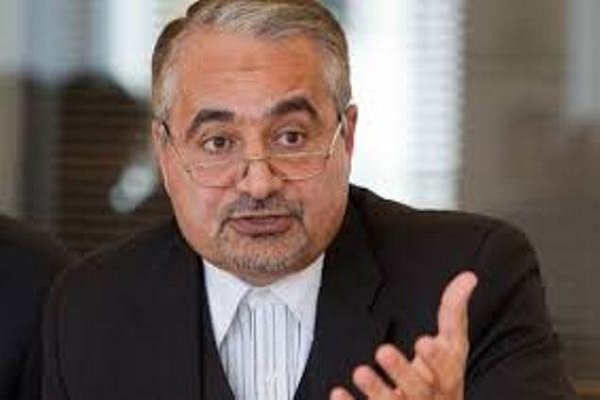





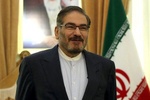
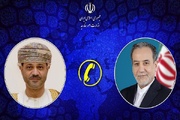
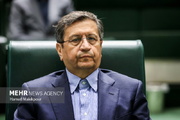
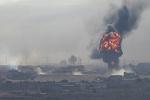
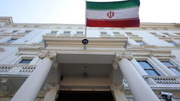
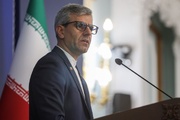









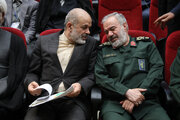
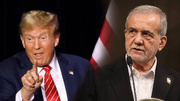


Your Comment